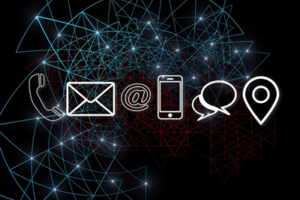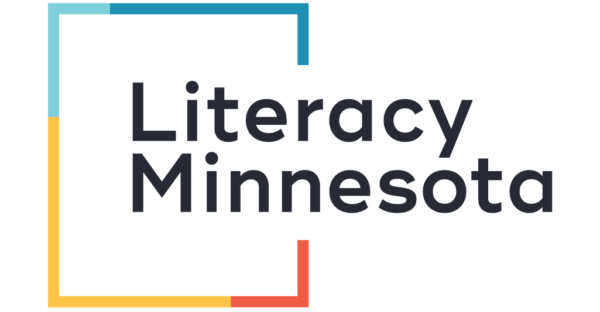- MN ABE Connect
- Archive
- Digital Equity Act Update: What Does It Mean for MN Adult Education?
 February 14, 2025
February 14, 2025
Digital Equity Act Update: What Does It Mean for MN Adult Education?
Susan Wetenkamp-Brandt, Senior Manager for Adult Literacy & Digital LearningThe Infrastructure Investment and Jobs Act (IIJA) of 2021 included two major programs to expand and improve broadband internet services across the United States: Broadband Equity, Access and Deployment (BEAD), which provides funding for broadband infrastructure, and the Digital Equity Act (DEA), which provides funding to improve internet service affordability, device access, and digital skills. Both of these programs are expected to bring significant federal resources to Minnesota in 2025. Minnesota has been approved for over $12 million in DEA funds, which will be made available through the MN Office of Broadband Development.
 The DEA is particularly relevant to our work because of its goals of making devices and internet service more affordable, and of expanding access to digital skills training. As adult educators, we know that it’s not enough for a person to live in a place with broadband internet if they can’t afford it. Furthermore, learners need a decent device to connect with and the skills to use that device effectively. The DEA offers an opportunity for adult education programs and our community partners to leverage federal funding to develop or expand digital literacy programming and even to provide devices directly to our participants.
The DEA is particularly relevant to our work because of its goals of making devices and internet service more affordable, and of expanding access to digital skills training. As adult educators, we know that it’s not enough for a person to live in a place with broadband internet if they can’t afford it. Furthermore, learners need a decent device to connect with and the skills to use that device effectively. The DEA offers an opportunity for adult education programs and our community partners to leverage federal funding to develop or expand digital literacy programming and even to provide devices directly to our participants.
On January 7, the Office of Broadband Development facilitated a webinar to share updates about the Digital Equity Act in MN.[1] The webinar shared information about the current state of broadband access in Minnesota and the next steps in DEA implementation. In 2025, they anticipate three major opportunities: two for funding, and one for networking.
- The first funding opportunity will be available to cities, counties, tribes, regional library systems, and similar entities for non-competitive awards to develop local digital opportunity plans. Information and applications are expected in mid-2025. If your community could make use of these planning funds, please encourage local leaders to apply.
- The second funding opportunity will be a competitive grant open to any organization serving populations[2] covered by the DEA. These grants can fund digital equity projects “of any size,” such as digital literacy classes, digital navigation services, or device distribution programs. Adult education programs serve covered populations and are well positioned to apply for this competitive grant opportunity. This opportunity is anticipated towards the end of 2025 or early 2026 to fund projects in 2026. It is important to note that because the DEA is not a Department of Education program, these grant funds are not restricted to ABE-eligible participants. A digital literacy program funded by the DEA could serve any community member, whether or not they enroll in core adult education programming.
- The Office of Broadband Development also plans to pilot a Digital Opportunity Leaders Network to bring together people at all levels who are interested in advancing digital equity across the state of Minnesota. If that sounds like you, watch for more information this summer.
What does all of this mean for Minnesota’s adult educators? While 2026 may seem a long way off, planning and connecting with partners now will pay off when the grant funding opportunity opens up. Do you have good information about what devices and internet access your learners have? Can you survey your community to find out what digital skills classes people are looking for? Can you make connections at libraries, CareerForce locations, senior centers, veterans’ homes or other community organizations that might be good partners for a digital equity grant? Laying the groundwork now will enable you to organize an effective grant application and help you bring DEA funds to your community next year.
[1] The slides and recording from the webinar can be found at Webinars and Recorded Events / Minnesota Department of Employment and Economic Development.
[2] Covered populations include: low-income households, aging individuals 60+ years old, incarcerated individuals, veterans, individuals with disabilities, individuals with language barriers (limited English-speaking or low literacy), individuals who are members of a minoritized racial or ethnic group, and rural individuals (cities under 50,000 not adjacent to cities of more than 50,000).

Newsletter Signup
Get MN ABE Connect—the official source for ABE events, activities, and resources!
Sign UpArticle Categories
- ABE Foundations/Staff Onboarding
- ACES/Transitions
- Adult Career Pathways
- Assessment
- CCR Standards
- Citizenship
- COVID-19
- Cultural Competency
- Digital Literacy/Northstar
- Disabilities
- Distance Learning/Education
- ELA
- Equity/Inclusion
- ESL
- HSE/Adult Diploma
- Listening
- Math/Numeracy
- Mental Health
- Minnesota ABE
- One-Room Schoolhouse/Multilevel
- Professional Development
- Program Management
- Reading
- Remote Instruction
- Science
- Social Studies
- Speaking/Conversation
- Support Services
- Teaching Strategies
- Technology
- Uncategorized
- Volunteers/Tutors
- Writing